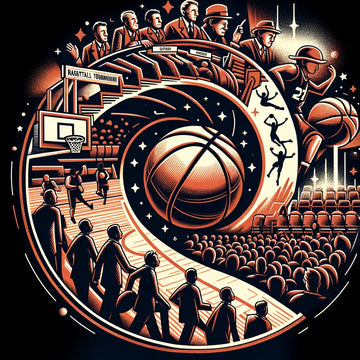
March Madness, the colloquial name for the NCAA Men's Basketball Tournament, has evolved from a modest beginning into one of the most eagerly anticipated sporting events in the United States. This annual basketball tournament, held every March, captivates millions with its unpredictable nature, thrilling upsets, and heart-stopping moments. Let's dive into the rich history and transformation of March Madness, tracing its roots from inception to its current status as a national phenomenon.
The Early Years
The tournament began in 1939, conceived by Ohio State University coach Harold Olsen. It was a modest affair, with only eight teams participating. The University of Oregon won the first-ever championship, setting the stage for what would become a cherished annual tradition. In these early years, the tournament gradually expanded, but it wasn't until the 1950s and 1960s that it began to resemble today's event in scale and significance.
Expansion and Growing Popularity
The 1970s marked a significant turning point for the tournament. It expanded to include 32 teams, allowing more universities and colleges to participate, which in turn increased the competition's visibility and popularity. This expansion coincided with the rise of televised sports, providing a national platform for the tournament and bringing the excitement of college basketball into homes across the country.
The Birth of a Phenomenon
By the 1980s, March Madness had firmly established itself as a major sporting event. The tournament's expansion to 64 teams in 1985 further intensified the excitement, creating more opportunities for upsets and Cinderella stories. One such moment came in 1983, when North Carolina State University, led by coach Jim Valvano, won the championship in a stunning upset that epitomized the unpredictable nature of the tournament.
The phrase "March Madness" itself, which had been used sporadically to describe the tournament, became officially associated with the NCAA in the 1980s after the organization settled a legal dispute over the use of the term. The catchy moniker perfectly captured the frenetic energy and unpredictability of the event.
Cultural Impact and Modern Era
Today, March Madness is more than just a basketball tournament; it's a cultural phenomenon that grips the nation every spring. The expansion to 68 teams, the introduction of the "First Four" games, and the proliferation of bracket challenges have only heightened the excitement and engagement surrounding the event. The tournament has a significant economic impact, with millions of dollars wagered legally and illegally on the outcomes of the games.
The rise of digital media has transformed how fans engage with March Madness, allowing for real-time updates, streaming of games, and more interactive experiences. Social media platforms buzz with highlights, analyses, and the shared experiences of fans nationwide.
Conclusion
From its humble beginnings to its status as a hallmark of American sports culture, March Madness has grown exponentially, reflecting the changing landscape of collegiate athletics and media consumption. Its history is a testament to the enduring appeal of college basketball and the universal love of competition. As March Madness continues to evolve, it remains a testament to the spirit of competition, the thrill of victory, and the agony of defeat. Every spring, it reaffirms its place in the heart of sports fans, promising upsets, drama, and basketball at its very best.





